Smart STEM-Driven Computer Science Education: Theory, Methodology and Robot-based Practices
Autor Vytautas Štuikys, Renata Burbaitėen Limba Engleză Hardback – 16 iul 2018
Practice includes multiple case studies oriented for solving the task prototypes, taken from the real world, by educational robots. These case studies illustrate the process of gaining interdisciplinary knowledge pieces identified as S-knowledge, T-knowledge, E-knowledge, M-knowledge or integrated STEM knowledge and evaluate smart components from the pedagogical and technological perspectives based ondata gathered from one real teaching setting. Smart STEM-Driven Computer Science Education: Theory, Methodology and Robot-based Practices outlines the overall capabilities of the proposed approach and also points out the drawbacks from the viewpoint of different actors, i.e. researchers, designers, teachers and learners.
| Toate formatele și edițiile | Preț | Express |
|---|---|---|
| Paperback (1) | 649.93 lei 6-8 săpt. | |
| Springer International Publishing – feb 2019 | 649.93 lei 6-8 săpt. | |
| Hardback (1) | 656.36 lei 6-8 săpt. | |
| Springer International Publishing – 16 iul 2018 | 656.36 lei 6-8 săpt. |
Preț: 656.36 lei
Preț vechi: 820.45 lei
-20% Nou
Puncte Express: 985
Preț estimativ în valută:
125.61€ • 130.14$ • 104.83£
125.61€ • 130.14$ • 104.83£
Carte tipărită la comandă
Livrare economică 21 martie-04 aprilie
Preluare comenzi: 021 569.72.76
Specificații
ISBN-13: 9783319784847
ISBN-10: 3319784846
Pagini: 324
Ilustrații: XVII, 368 p. 118 illus.
Dimensiuni: 155 x 235 mm
Greutate: 0.72 kg
Ediția:1st ed. 2018
Editura: Springer International Publishing
Colecția Springer
Locul publicării:Cham, Switzerland
ISBN-10: 3319784846
Pagini: 324
Ilustrații: XVII, 368 p. 118 illus.
Dimensiuni: 155 x 235 mm
Greutate: 0.72 kg
Ediția:1st ed. 2018
Editura: Springer International Publishing
Colecția Springer
Locul publicării:Cham, Switzerland
Cuprins
Part 1: Introduction: Motivation, Challenges, and Conceptual Vision of STEM-Driven CS Education Based on Robotics.- Challenges of STEM-Driven Computer Science (CS) Education.- A Vision for Introducing STEM into CS Education at School.- Smart Devices and Educational Robotics as Technology for STEM Knowledge.- Part 2: Methodological and Theoretical Background of Approaches to Implement the Proposed Vision.- A Methodological Background for STEM-Driven Reuse-Enhanced CS Education 60.- Theoretical Background to Implement STEM-Driven Approaches.- Part 3: Design, Re-Design and Use of Smart Content for STEM-Driven CS Education.- Understanding of Smart Content for STEM-Driven CS Education.- Model-Driven Design and Re-Design of Smart STEM-Driven CS Content.- Stage-Based Smart Learning Objects: Adaptation Perspective.- Agent-Based GLOs/SLOs for STEM.- Part 4: Infrastructure to Support STEM-Driven CS Educational Practice.- Personal Generative Library for STEM-Driven Educational Resources.- A Methodology and Tools for Creating Generative Scenario for STEM.- Smart STEM-Driven Educational Environment for CS Education: A Case Study.- Practice of Smart STEM-Driven CS Education at High School.- Part 5:An Extended Vision to STEM-Driven CS Education.-Internet-of-Things: A New Vision for STEM and CS Education.- A Finalizing Discussion and Open Issues.- Glossary.- Indexes.
Textul de pe ultima copertă
At the centre of the methodology used in this book is STEM learning variability space that includes STEM pedagogical variability, learners’ social variability, technological variability, CS content variability and interaction variability. To design smart components, firstly, the STEM learning variability space is defined for each component separately, and then model-driven approaches are applied. The theoretical basis includes feature-based modelling and model transformations at the top specification level and heterogeneous meta-programming techniques at the implementation level.
Practice includes multiple case studies oriented for solving the task prototypes, taken from the real world, by educational robots. These case studies illustrate the process of gaining interdisciplinary knowledge pieces identified as S-knowledge, T-knowledge, E-knowledge, M-knowledge or integrated STEM knowledge and evaluate smart components from the pedagogical and technological perspectives based ondata gathered from one real teaching setting. Smart STEM-Driven Computer Science Education: Theory, Methodology and Robot-based Practices outlines the overall capabilities of the proposed approach and also points out the drawbacks from the viewpoint of different actors, i.e. researchers, designers, teachers and learners.
Practice includes multiple case studies oriented for solving the task prototypes, taken from the real world, by educational robots. These case studies illustrate the process of gaining interdisciplinary knowledge pieces identified as S-knowledge, T-knowledge, E-knowledge, M-knowledge or integrated STEM knowledge and evaluate smart components from the pedagogical and technological perspectives based ondata gathered from one real teaching setting. Smart STEM-Driven Computer Science Education: Theory, Methodology and Robot-based Practices outlines the overall capabilities of the proposed approach and also points out the drawbacks from the viewpoint of different actors, i.e. researchers, designers, teachers and learners.
Caracteristici
Reviews exhaustively trends and challenges of the STEM paradigm in the context of K-12 education Provides a framework of integrating STEM into Computer Science (CS) education based on using robotics Treats from the automation perspective theoretical, methodological and practical aspects in designing, preparing and using of smart components to support STEM-driven CS education effectively Components include the smart generative learning content, smart generative scenario, personal generative libraries for students and teachers, all together integrated within the smart educational environment
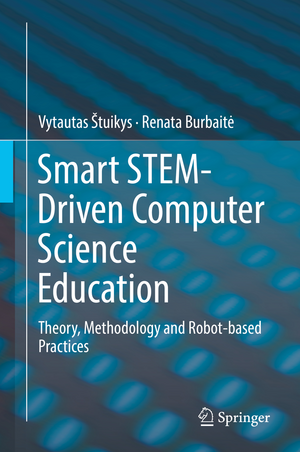

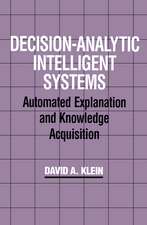
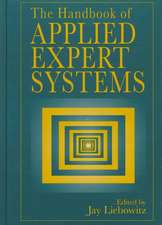
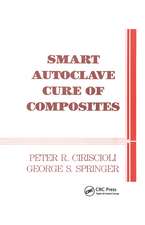

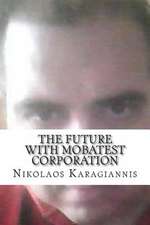















![A Fascinating Country in the World of Computing [With CDROM]: Maintaining Growth and Staving Off the Asian Contagion](https://i0.books-express.ro/bt/9789810239107/a-fascinating-country-in-the-world-of-computing-with-cdrom.jpg)
